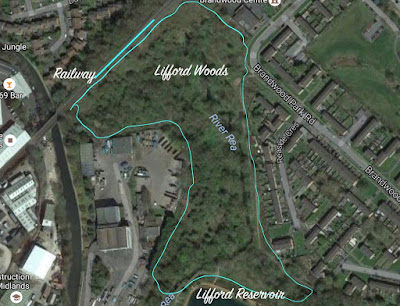From plantation to woodland
When does a plantation become a woodland? It's not an overnight occurrence but a gradual process and mostly overlooked.
Brockley Grove Plantation at Moor Green, like many other plantations created in the 1980's and 90's, is showing signs of woodland; beyond the presence of trees are subtle hidden changes, taking place year on year as decay and decomposition set in, aided by dead wood, fungi, invertebrates and other micro organisms, vital elements for the increasing biodiversity.
 |
| Orange Ladybird at Brockley Grove Plantation (Photo by Connor) |
This week we witnessed the presence of an Orange Ladybird,
Halyzia 16-guttata
the Uk Ladybird survey informs us -
Size: 4.5 - 6mm
Basic colour: orange
Pattern colour: white spots
Number of spots: 12-16
Spot fusions: none
Melanic (black) form: no
Pronotum: orange
Leg colour: orange
Habitat: deciduous trees
Host plant: deciduous trees, particularly sycamore and ash
Overwintering: leaf litter or in sheltered positions on trees
Food: mildews
Other notes: Considered an indicator of ancient woodland until 1987. Has become widespread since it became common on sycamore trees. Recently has also moved onto ash trees and appears to be increasing in abundance. It is attracted to light and is often found in moth-traps. Rarely breeds before mid-June.
Mature Sycamore is indeed present at Brockley Plantation but casts a heavy shade over the coppiced Hazel stools, so a decision may be required if one species seems to be dominating, for now it's an awareness and monitoring exercise and we'll check on the regrowth of the Hazel stools next Autumn.
 |
| Woodland Wednesday Workers at Brockley Grove Plantation (Thanks to Terry Quinn for photos) |
 |
| Roy pays attention to billhook |
Thanks to Terry Quinn for photos




Comments
Post a Comment